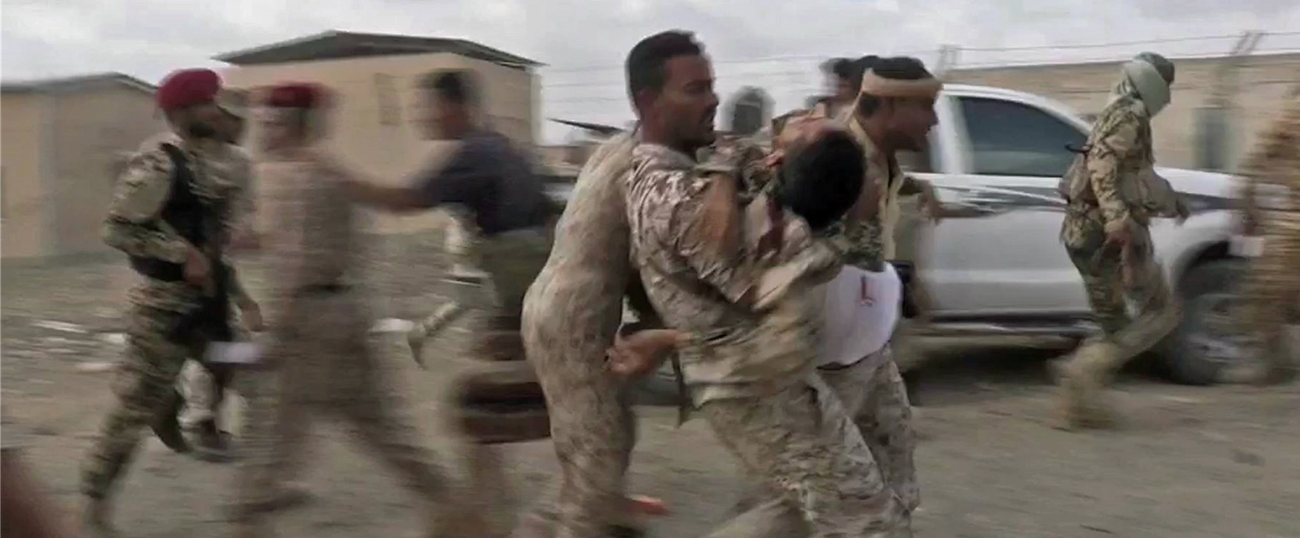Future War on Parade in Yemen
The nonstate Houthis used an Iranian-model drone to attack the Yemeni military’s top brass in a preview of how the next wars in the Middle East will be fought




Here’s a disquieting inversion of business as usual: A Middle Eastern militant group just used a drone in an attempted decapitation strike on a state military, an operation that required significant advanced planning and intelligence collection.
On Jan. 10, Yemen’s Houthi rebel movement struck a gathering of the country’s top military and intelligence leadership during a parade at al-Anad air base, just north of the coastal flashpoint city of Aden. The Houthis flew a low-flying, remote-controlled bomb toward a parade stand and detonated the drone in midair, killing at least six soldiers and injuring, a provincial governor, the army’s deputy chief of staff, and a brigadier general in the country’s intelligence services. A Houthi “military source” told Yemen’s Al Masirah media outlet that the attack was the result of “careful monitoring of gatherings and movements” at the facility, according to the BBC. Meanwhile, Houthi leadership announced that the attack used a new type of drone, called the Qasef-2K. Of course, Yemen has no indigenous drone production capabilities, and a U.N. panel of experts report has noted that the earlier Qasef-1 is almost identical to the Iranian-made Ababil-T.
Neither side in Yemen’s civil war has seemed overly concerned with the niceties of humanitarian law, but the Al-Anad attack was particularly brazen. The Houthis and the government were under a fragile ceasefire, while U.N. mediators have spent months convincing the two sides to enter into peace talks, efforts that seemed to be showing some promise. The drone attack makes it harder for Yemen’s internationally recognized government—a U.S. counterterror partner before Houthi forces overwhelmed the capital Sa’ana in late 2014—to trust that their Iranian-supported adversaries are negotiating in good faith.
As brutal as the Saudi and Emirati campaign in Yemen has been, the Gulf states have succeeded in reclaiming territory from the rebels. The al-Anad base itself was recaptured from the Houthis in August of 2015. If the intention of this attack was to foreclose on a negotiated end to Yemen’s war and further enmesh Saudi Arabia and its allies in a demoralizing and reputation-shredding military campaign—as well as to kill as many high-ranking Yemeni military and political officials as possible—there’s a better-than-even chance the strategy will work.
The Houthis are not the only Iranian client with drone capabilities. Hezbollah has a gaudy and altogether groundbreaking, Iranian-built drone arsenal that includes extensive air bases in Syria. Hezbollah has never attempted anything like yesterday’s strike against Israel but the Lebanese militant group did not yet have a drone fleet at the time of the last major conflict between the two sides, in 2006.
Al-Anad is one of the most sophisticated aerial attacks ever to be carried out by a nonstate group. It shows what Iranian-supported militants are capable of doing with Iranian-made high-end arms. There’s little doubt that the Israelis are paying attention.
Armin Rosen is a staff writer for Tablet Magazine.